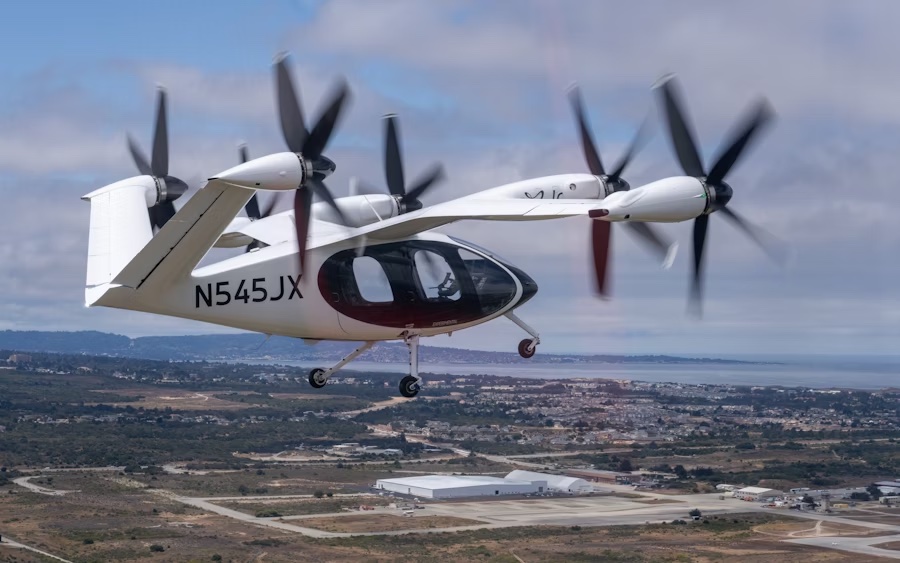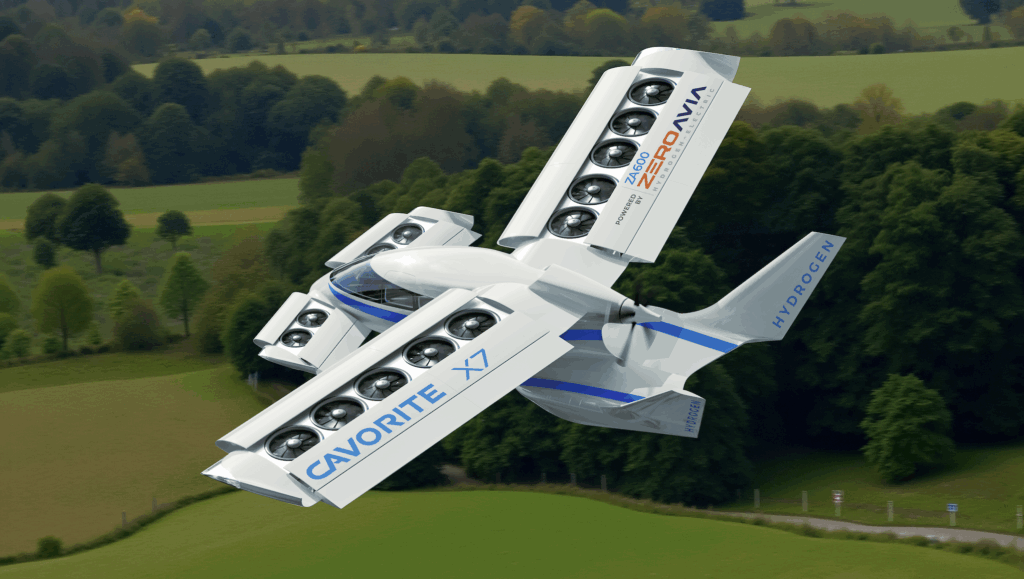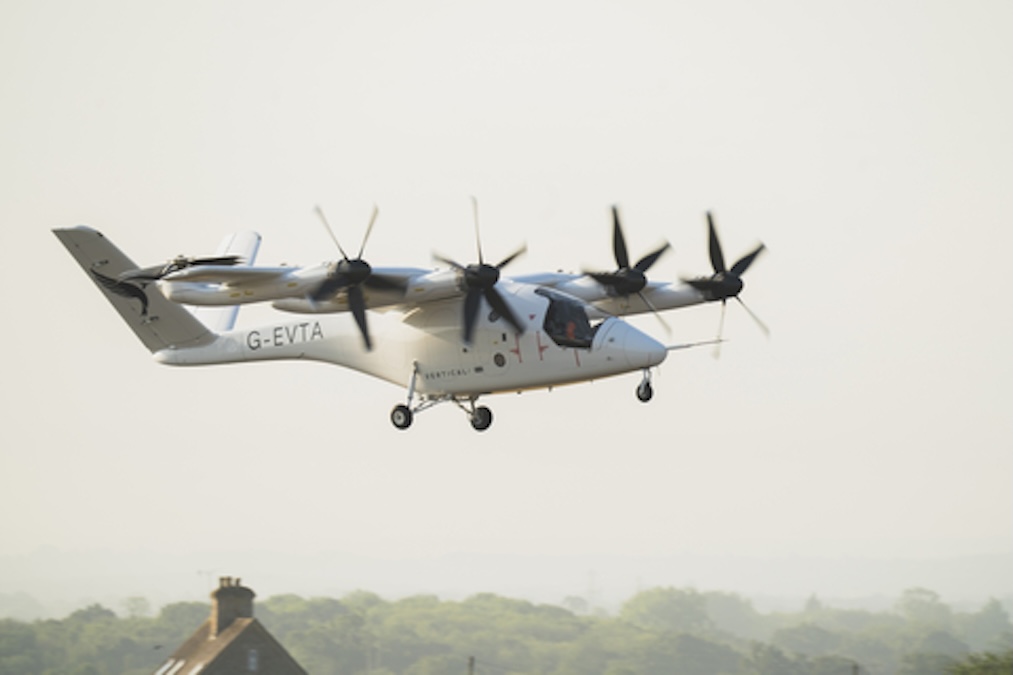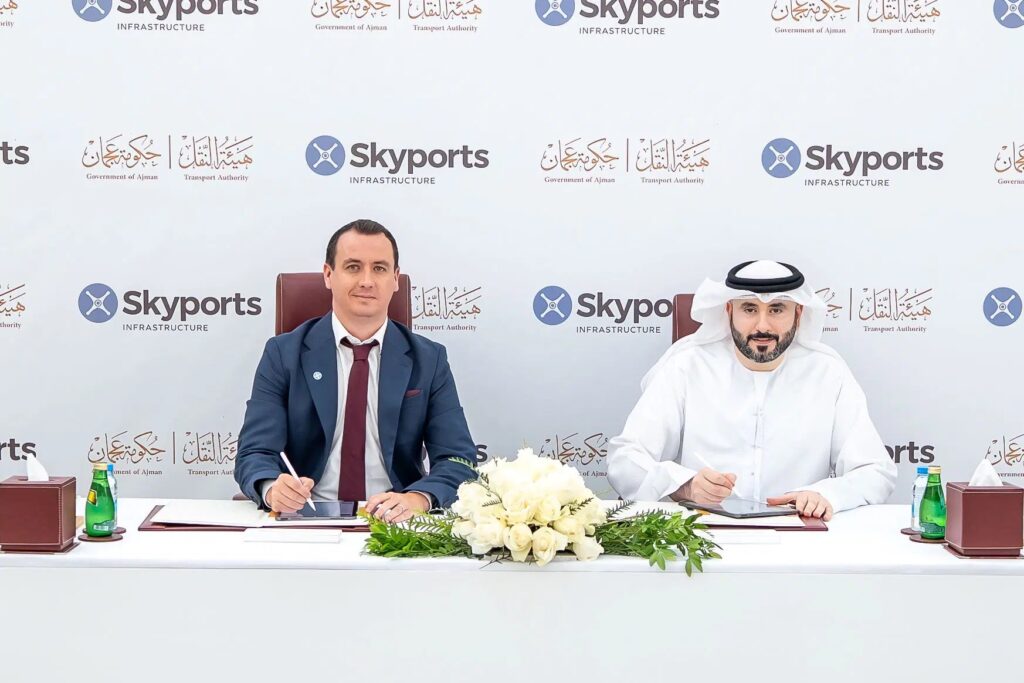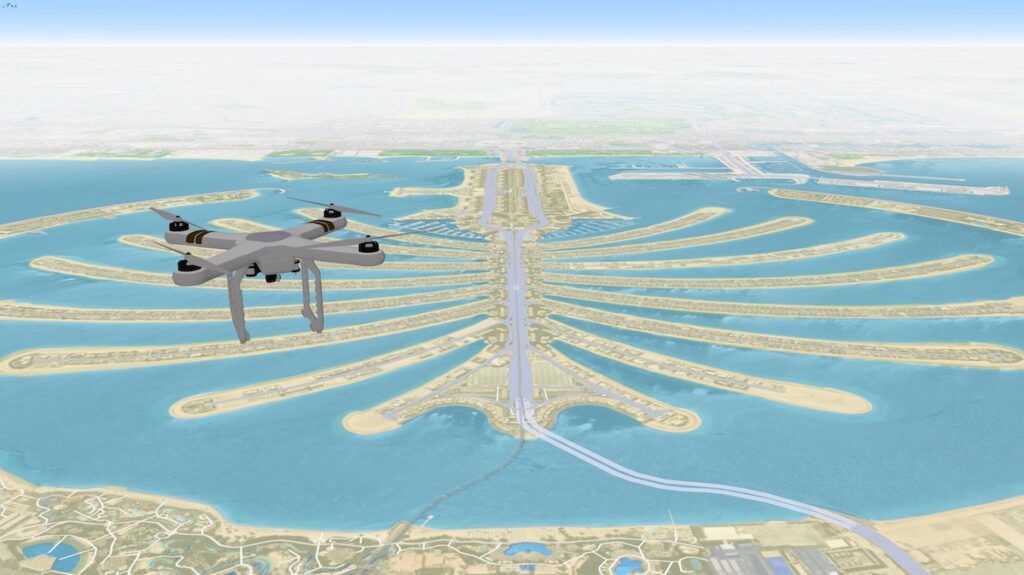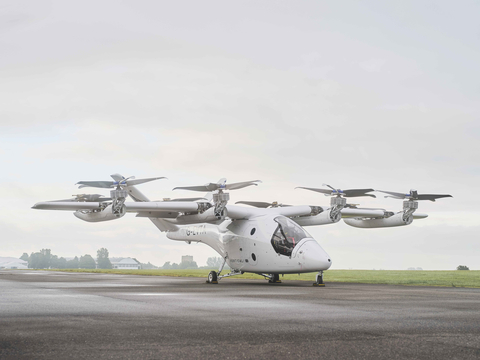
Vertical Aerospace has unveiled its next generation full-scale VX4 prototype, reportedly the only electric vertical take-off and landing vehicle (eVTOL) designed, built and assembled in the UK.
This VX4 is more powerful than the previous full-scale prototype, with a 20% increase in the power to weight ratio. This enables the aircraft to reach speeds of up to 150mph – the certification aircraft’s intended cruise speed.
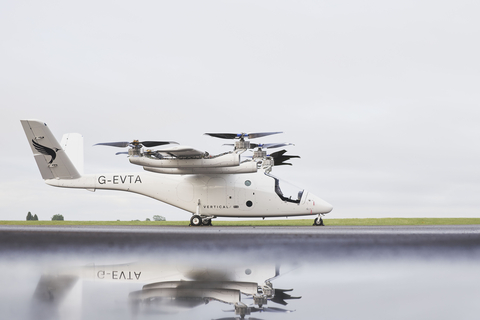
The new prototype features Vertical’s new proprietary propellers, designed specifically for eVTOLs.
The propellers are optimized for low noise, made of carbon fiber composite using a single-shot cure process, and have an aerodynamic shape to maximize performance across hover and cruise phases.
The aircraft also features Vertical’s latest battery and powertrain system, the company’s most powerful and lightest yet.
The battery and powertrain system features rapid charge time and multiple backup power sources, while meeting the performance, safety, operational, and commercial requirements of eVTOL. The new aircraft includes proprietary batteries, electronics, software, and more powerful electronic propulsion units.
Vertical developed these systems at its Vertical Energy Centre, an advanced aerospace battery facility near Bristol, UK.
With the VX4, 60% of the technologies and components are from leading aerospace partners. This is up from 10% on the previous prototype, making it Vertical’s most advanced prototype yet and a step closer to achieving certification.
The new prototype has completed systems and aircraft testing and commissioning. Vertical is now working with the UK Civil Aviation Authority (CAA) to evaluate the engineering, design, test data, and aircraft for a Permit to Fly, effectively conducting a “mini certification” program.
Vertical will then begin a robust flight test program at the Vertical Flight Test Centre, with a focus on achieving piloted flight.
The company is currently developing an identical full-scale prototype to accelerate the VX4’s flight test program and demonstration capability. Vertical will take flight test learnings from both prototypes into the design and development of the certified VX4 model.
Stuart Simpson, Chief Executive Officer, Vertical, commented; “Our goal is to build the safest and most advanced aircraft in this new category of transport. With the new full-scale VX4 prototype, which has been built by combining our own world-leading technology with that from leading aerospace partners, we are well on the way to achieving that goal.
“This is a critical step on our road to certification and commercialisation and, while there is more to do, the support of our partners and our $6 billion order book shows the trust and confidence the industry has in our outstanding product. We are excited to start our robust, test flight programme at our Flight Test Centre as we continue our focus on achieving piloted flight.”
The aircraft has been designed and built alongside global aerospace partners, including GKN Aerospace, Honeywell, Hanwha, Molicel, Leonardo and Syensqo.
Dave Stepanek, Executive Vice President, Chief Transformation Officer, Bristow Group, added; “As one of the world’s largest helicopter operators, we’re excited to be collaborating with Vertical as they work to bring the VX4 to market. We are delighted to see the progress being made with this latest prototype.”
David Shilliday, Vice President and General Manager, Unmanned Aerial Systems / Urban Air Mobility, Honeywell Aerospace Technologies, stated; “The VX4 is testament to what can be achieved when industry leaders join forces to pioneer the future of air mobility. This electric aircraft benefits from the Honeywell Anthem flight deck and software, as well as a state-of-the-art fly-by-wire system. This enables the pilot or autopilot to manoeuvre the aircraft safely and simply, ensuring a smooth journey.”



